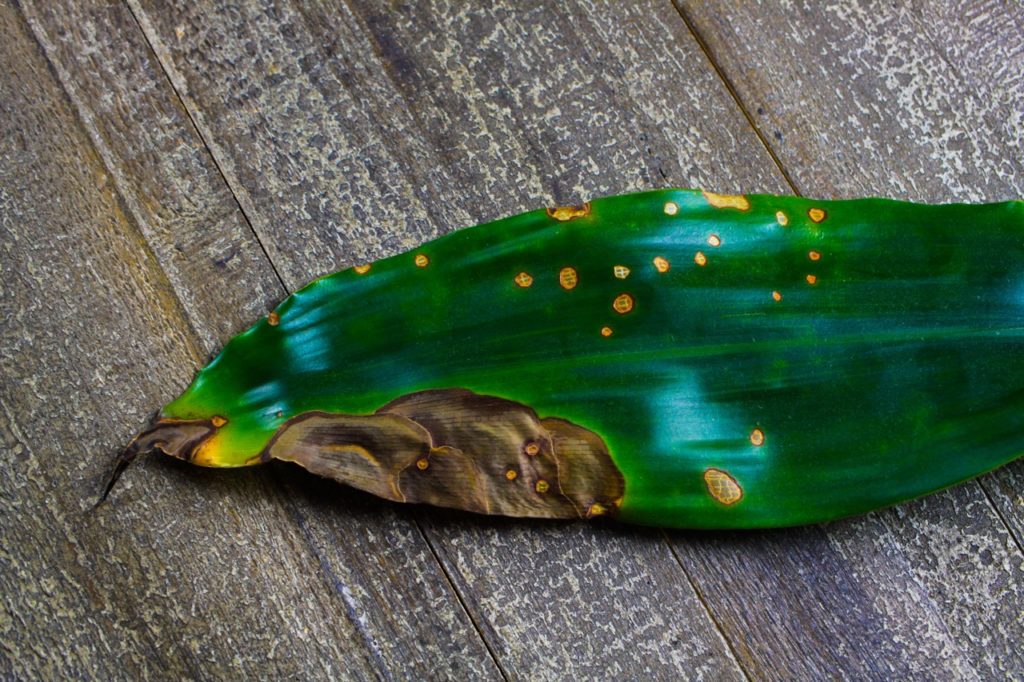Cultivation, Fungal And Pest Issues Can Sometimes Affect Yuccas – These Are The Fixes


Elizabeth is a Permaculture Garden Designer, Sustainability Consultant and Professional Writer, working as an advocate for positive change. She graduated from the University of St. Andrews with an MA in English and Philosophy and obtained a Diploma in Applied Permaculture Design from the Permaculture Association.
Reviewed By COLIN SKELLY

Colin is a Horticulturist and Horticultural Consultant with experience in a range of practical and managerial roles across heritage, commercial and public horticulture. He holds the Royal Horticultural Society’s Master of Horticulture award and has a particular interest in horticultural ecology and naturalistic planting for habitat and climate resilience.
IN THIS GUIDE
YUCCA GUIDES
Common Problems
– Brown Spots
– Droopy Leaves
– Leaves Turning Yellow
– Root Rot
Division
Overwintering
Revival
Varieties
Watering
Yuccas are not particularly challenging plants to grow and don’t have many problems or issues.
However, as with any plant, things can sometimes go wrong.
Here are the most common problems and issues you are likely to encounter:
- Cultivation issues related to your gardening practices or environmental conditions, such as discoloured or drooping leaves.
- Fungal issues causing brown spots on leaves or root rot.
- Pest problems such as issues with aphids or snails when growing yuccas outdoors.
Keep reading to understand these issues in more detail and to find out what you can do to prevent or fix them.
1) Cultivation Issues
If any problems or issues do occur, they are most commonly caused by something that you, as the grower, have done or failed to do – or an issue with the location in which you have chosen to grow your plant.
Brown Leaves
If you see brown leaves on your yucca plant, it is not always a cause for concern.
Lower leaves naturally turn brown and are shed as the plant continues to grow.

However, if many leaves are brown and crispy, this is likely because your plant has not received enough water.
Brown tips of leaves can suggest that the humidity was too low, while more widespread browning often means you have not been watering enough.
See more on fixing brown leaves in this guide.
Drooping Leaves
Drooping leaves are most commonly caused by low light levels.
Yuccas need plenty of light and it is very common that indoors grown plants don’t get enough.
However, leaves may also droop if the temperatures have been too low during a sudden cold snap when yucca are outdoors.
Indoors or out, drooping leaves can also be a sign of under-watering or overwatering.
Overwatering is likely the culprit if the drooping leaves also suddenly turn yellow on your plant.
We share more on fixing drooping leaves in this guide.
Yellow Leaves
As with brown discolouration, some yellowing on the lower leaves of a yucca plant is completely normal.
However, if the leaves suddenly go yellow and seem rather limp, this is often due to overwatering, or a problem with drainage that has led to waterlogged soil.

If watering has been extremely excessive, root rot can set in.
Cut off affected root sections and repot your yucca once you spot the issues and it may still recover.
Learn more about fixing yellow leaves in this guide.
2) Fungal Problems
While cultural problems are far more common when growing yucca, you may also experience fungal issues when growing this plant.
Brown Spots
Fungal issues often manifest themselves as brown spots on the leaves of your plant.

Simply cut off any leaves that are showing signs of infection to prevent its spread, and this should not be too great an issue.
Root Rot
Root rot can occur not only due to waterlogged soil but also due to fungal infection as a result of excessive water.
It is not always easy to find out whether fungi are involved, but if root rot occurs, you will need to cut off all affected areas and repot in a new medium to prevent moving fungi with your plant.

“Root rot will not usually happen with a potted Yucca with adequate drainage,” explains Colin Skelly, a Master Horticulturist.
“Repot using John Innes No.2 with some added grit and ensure that the pot has plenty of drainage holes. If you have a drainage tray, make sure that your Yucca is not standing in a sump of water after watering.”
3) Pests
Yuccas are generally not particularly troubled by pests.
However, there are a few small issues that can arise when growing these plants outdoors.
Aphids
Sometimes, aphids can be found on yucca flowers, though should not usually affect the plant excessively.

Attracting beneficial predatory insects and tolerating aphids in your space is the best way to prevent this pest from getting out of control.
Snails
Another issue that sometimes arises is snails damaging the yucca leaves.
This is rarely a major problem but can cause your plant to look unsightly.
Attracting birds and other wildlife that eat snails to your garden and cutting off any affected leaves should ensure that this does not become a bigger issue.
